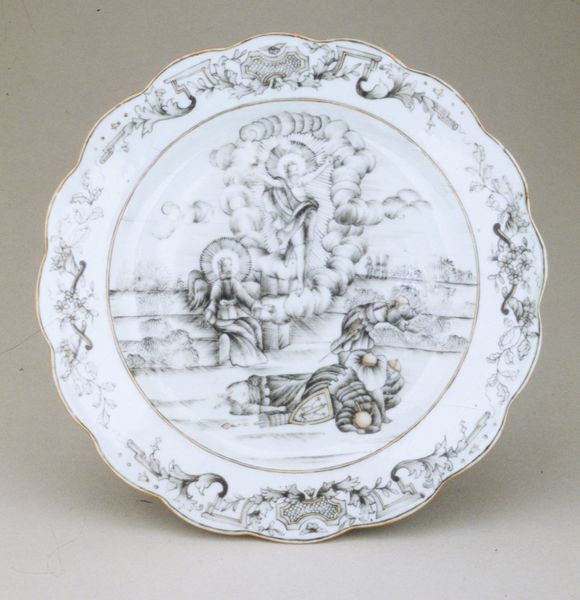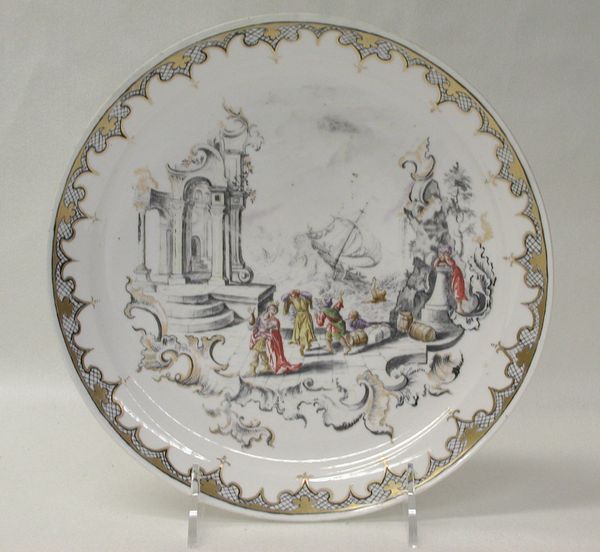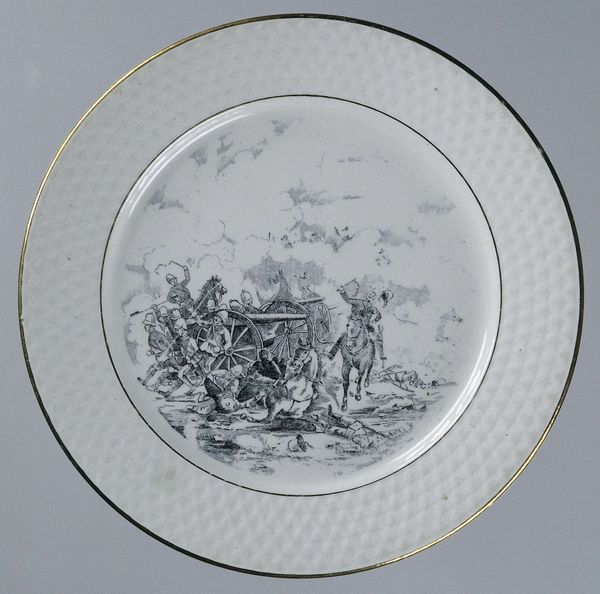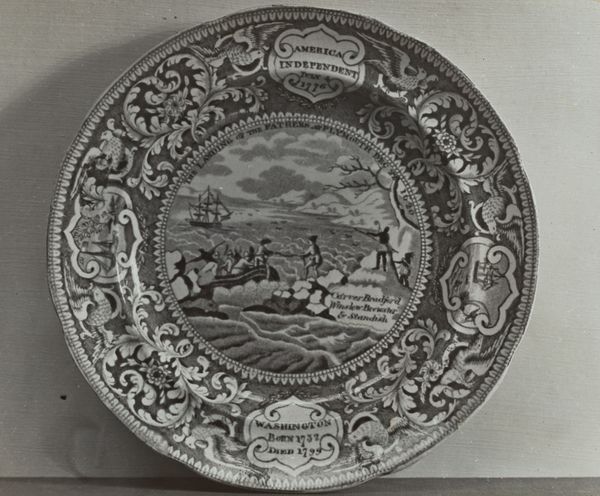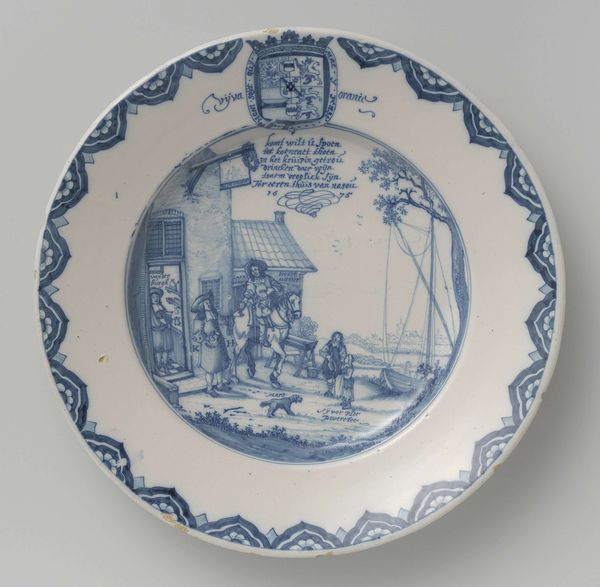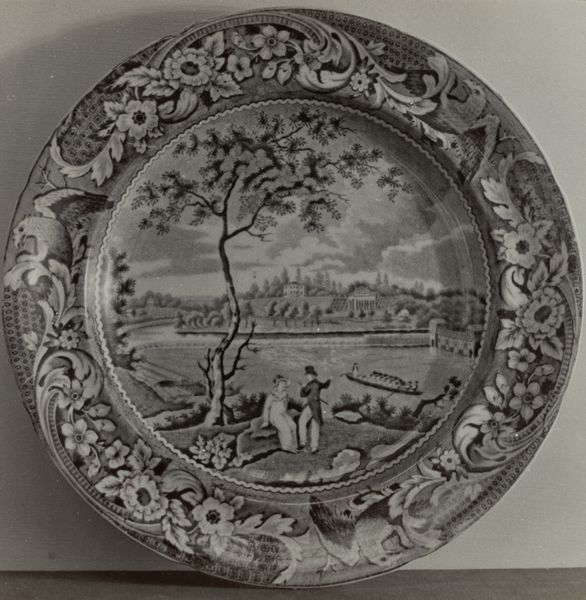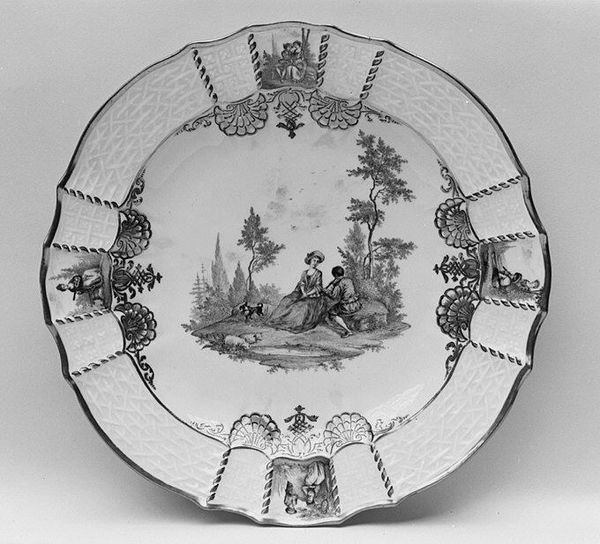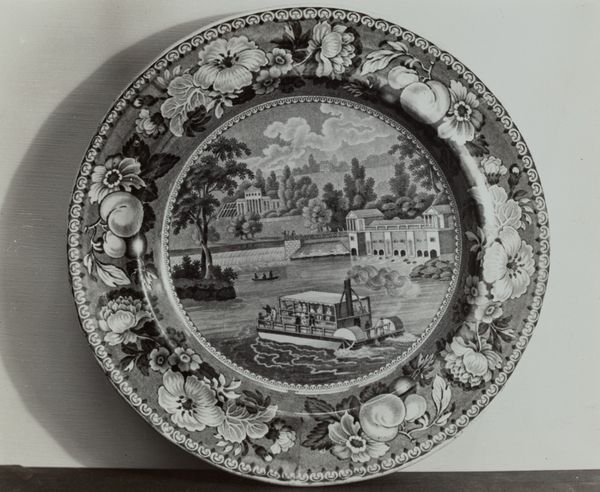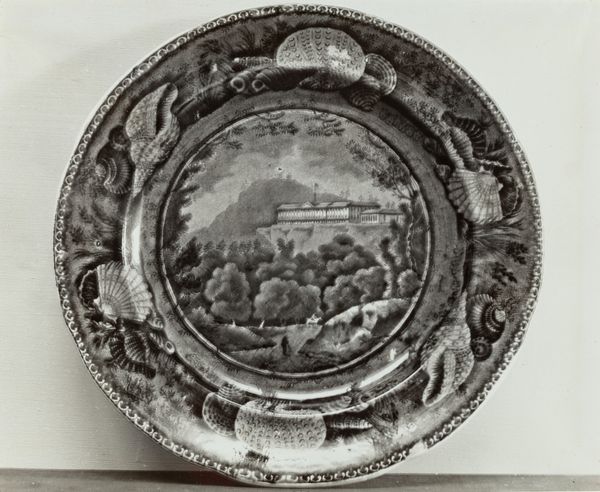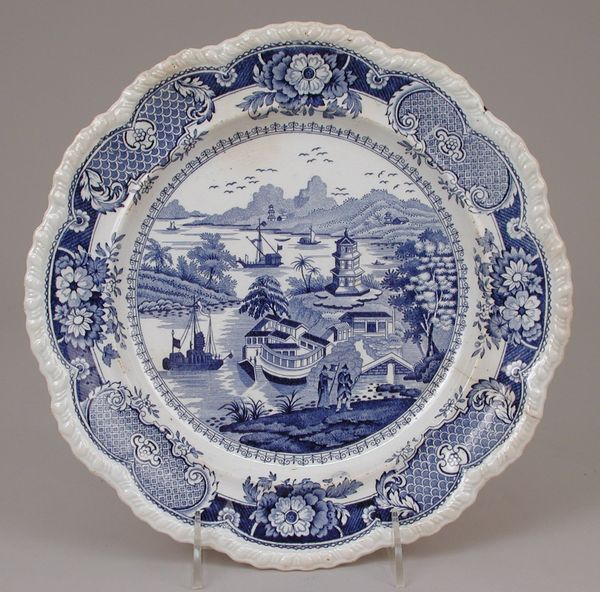
painting, ceramic, porcelain, earthenware
#
baroque
#
painting
#
ceramic
#
porcelain
#
earthenware
#
ceramic
#
earthenware
#
history-painting
#
academic-art
Dimensions: 1 3/4 x 9 x 9 in. (4.45 x 22.86 x 22.86 cm)
Copyright: Public Domain
Editor: Here we have a soup bowl from around 1745, an anonymous work titled "-Crucifixion-". It's crafted from earthenware and porcelain, and displayed at the Minneapolis Institute of Art. The muted palette creates a surprisingly somber mood. What do you make of it? Curator: Well, it's fascinating, isn't it? To see such a weighty subject—the Crucifixion—placed on something as domestic as a soup bowl. It’s both reverent and, dare I say, slightly subversive. Imagine people slurping soup while contemplating mortality. Do you think that the artist considered a clash between everyday life and the profound mystery? Editor: It's a bit cheeky, definitely contrasts everyday experience! I wouldn't think of combining the two myself. Curator: The visual language echoes academic history painting, all those carefully rendered figures and dramatic compositions squeezed into a circle like that. Yet, the limited color palette softens the brutality; it’s as if the artist wants you to reflect more than recoil. Editor: The bowl feels so restrained. And you mentioned it was on purpose? I hadn't considered that it made sense, and wasn't simply cheaper to create the same artwork in gray versus many colors. Curator: Yes, yes! Almost a meditative version of the crucifixion. You begin to wonder about the hands that made it, the diners who used it, and how such objects once bridged faith and daily living. Does it change the way that you feel about it at all? Editor: It makes you question everything in a way I really appreciate! Curator: Precisely! This simple soup bowl suddenly transforms into a conversation starter. A window into how the Baroque era really looked at art versus practical art.
Comments
No comments
Be the first to comment and join the conversation on the ultimate creative platform.
